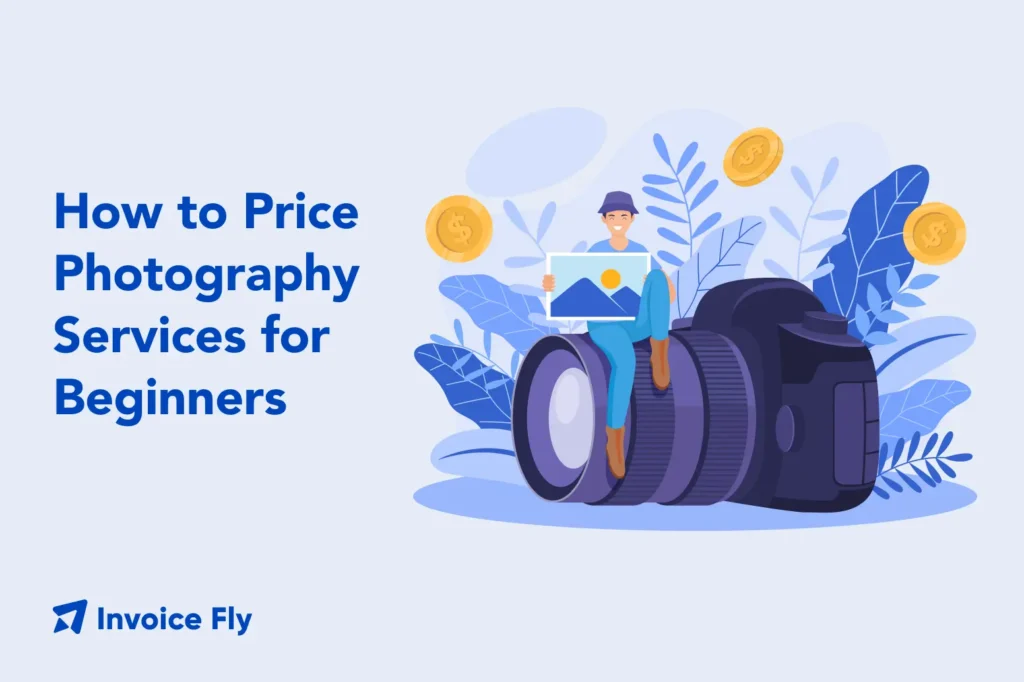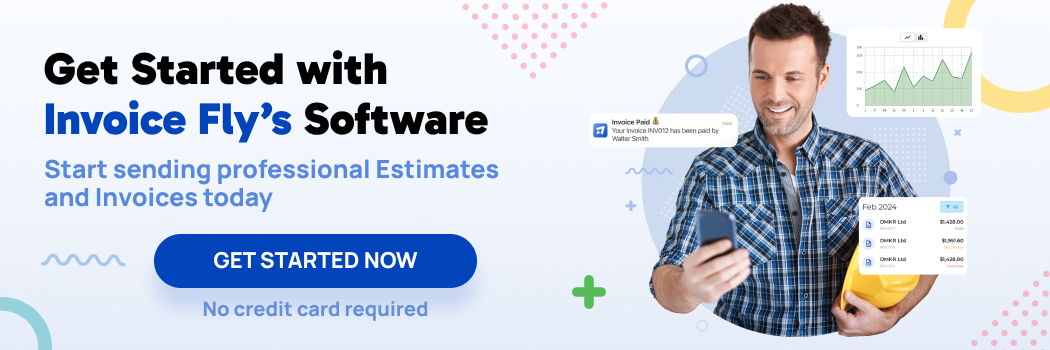How to Price Photography Services for Beginners

Table of Contents
- Why Pricing Your Photography Right Matters
- Understanding Your Costs
- The Cost-Plus Pricing Formula (Simple and Effective)
- Our Photography Pricing Guide to Success
- Industry-Specific Pricing Considerations
- Different Approaches to Building a Pricing Model
- How to Test Your Photography Pricing Model
- Know Your Competition (But Don’t Just Copy!)
- Final Thoughts
- FAQs about How To Price Photography Services
You’ve got the camera. You’ve practiced your shots. Friends and family love your work. Now you’re ready to take the next step and start making money as a photographer.
But here comes the tricky part: How much should you charge?
Set your prices too high and you might scare off potential clients. Too low, and you could end up working hours for less than minimum wage. Pricing your photography services as a beginner can feel overwhelming—but don’t worry, you’re not alone.
This guide will walk you through the process of setting beginner-friendly prices that help you cover your costs, value your time, and actually make a profit. We’ll keep things simple and practical, with examples and tips to help you feel confident charging what your work is worth.
Why Pricing Your Photography Right Matters
When you’re just starting out, it’s tempting to charge as little as possible to get those first few clients. But pricing too low doesn’t just hurt your wallet—it can make clients question your skills and professionalism.
Remember: your time, effort, and creativity have value. A thoughtful pricing plan helps you:
- Cover your business costs
- Avoid burnout from working too much for too little
- Attract the right clients
- Build a sustainable business
This guide will help you find that balance between fair prices for your clients and fair pay for yourself.
Understanding Your Costs
Before you can set any prices, you need to know what it actually costs to run your photography business. A common mistake beginners make is only thinking about their camera gear—but there’s a lot more to it.
Cost of Materials
As a photographer, your camera is just one piece of the puzzle. Here are some other common materials photographers need:
- Memory cards and external hard drives for storing photos
- Batteries, chargers, and backup equipment
- Props, backdrops, and lighting gear (especially for portraits or product shoots)
- Prints or photo books (if included in your packages)
Jason, a portrait photographer in Chicago, spent his first year not tracking his materials at all. When he finally sat down and did the math, he realized he’d spent over $800 on things like memory cards, batteries, and client prints. And never charged for any of it. He was basically giving these away for free because he never counted them into my pricing.
After adding a materials fee to each session, Jason saw a big improvement in his profits without losing clients.
Selling Digitally? Don’t Forget These Costs
If you’re delivering digital files instead of physical prints, you still have business expenses to consider:
- Online gallery platforms like Pixieset or ShootProof
- Cloud storage fees to keep your clients’ photos safe
- Editing software subscriptions like Adobe Photoshop or Lightroom
These costs may seem small, but over time they add up. Make sure your prices help cover them so you’re not paying out of pocket.
Cost of Labor (Your Time!)
Many new photographers forget that their time is one of the biggest costs of all. You’re not just working when the camera is clicking. Your time also includes:
- Traveling to and from the shoot
- Meeting with clients to plan the session
- Editing and retouching images (which can take hours!)
- Delivering the final photos and following up with clients
- Handling emails, scheduling, contracts, and payments
Maya, a wedding photographer in North Carolina, started tracking her time after feeling like she was always working but barely earning enough. She discovered that for each wedding shoot, she spent over 25 hours on editing, communication, and prep—on top of the 8 hours of shooting.
Once she factored in all those hours, she realized her “great deal” prices were actually paying her less than $10 an hour. Adjusting her rates to reflect her real time made her business not only sustainable but enjoyable again.
Overhead Costs
Overhead costs are the things you pay for whether or not you’re booked that day. This includes both fixed expenses and variable expenses.
Fixed Expenses (Year-round Costs)
- Camera gear and lenses (which wear out over time)
- Your computer and editing software
- Business insurance (to protect your equipment and yourself)
- Website hosting and maintenance
- Business licenses or registration fees
- Professional memberships (like PPA or local photographer groups)
Variable Expenses (Change Month to Month)
- Marketing and advertising (like Facebook ads or Google listings)
- Gas or travel costs for shoots
- Online courses or photography workshops
- Office supplies
Skipping these costs in your pricing can leave you making less than you think.

The Cost-Plus Pricing Formula (Simple and Effective)
One of the easiest ways to set your prices is the cost-plus pricing formula. Here’s how it works:
- Add up all your costs for a typical session (your time, materials, overhead).
- Decide how much profit you want to make on top of those costs.
- Combine the two—that’s your price.
Let’s say your one-hour portrait session costs you $125 when you count your time, materials, and a slice of your overhead. If you want a 50% profit margin ($62.50), your total price would be $187.50, which you might round up to $195 or $200.
This method makes sure you’re not just covering your costs. You’re also paying yourself fairly.
Our Photography Pricing Guide to Success
Here are some smart steps for setting beginner-friendly prices:
- Know your market: Check what other photographers near you charge.
- Start a little lower (but not too low): Beginners often charge 25–30% less than experienced photographers with similar styles.
- Raise your prices gradually: As your skills and portfolio grow, increase your rates by about 10–15%.
- Value your work: Charging too little can make clients question your quality.
- Be clear about what’s included: Always explain what your price covers (like how many edited photos, how long the session is, and any extras).
Industry-Specific Pricing Considerations
Every type of photography has its own pricing expectations. Here’s a quick overview:
Event Photography Pricing
- Hourly rates: $75–150 per hour for beginners
- Offer packages for half-day or full-day coverage
- Be clear about how many edited photos are included and any extra fees
Portrait Photography Pricing
- Per session: $150–300 for beginners
- Include session length (usually 1–2 hours) and the number of final edited images
- Mini-sessions (short 30-minute shoots) can be offered at a lower rate
Graduation Shoot Pricing
- Similar to portraits: $150–250
- Can include multiple locations or outfit changes
- Special graduation-season packages are a great way to attract clients
Wedding Photography Pricing
- Full-day coverage for beginners often starts around $800–1,500
- Include details: number of hours, second shooter (if any), engagement session, deliverables (albums, online gallery, etc.)
- The Knot reports the national average for wedding photography at $2,500, but prices vary widely depending on location and experience.
Different Approaches to Building a Pricing Model
There’s no one-size-fits-all way to charge for photography. Here are a few common pricing models:
Hourly Rates
Good for events or commercial work where time is a big factor. Beginners often charge $50–100 per hour.
Flat Rates (Package Pricing)
Great for portraits, family sessions, or weddings. Flat rates make it easy for clients to know what they’re getting.
Rates Based on Experience
As your portfolio grows, your prices should too. Many photographers raise their rates by 15–25% after the first year or two.
Rates Based on Specialty
Some photography types pay more than others. Commercial and product photography often command higher rates than family portraits.
Price Per Use (Licensing Fees)
Common in commercial work. You charge based on how the images will be used—for example, local ads vs. national campaigns.
How to Test Your Photography Pricing Model
Not sure if your prices are right? Try this:
- Offer your rates to a few test clients (friends, family, or referrals).
- Get feedback on whether your prices feel fair.
- Track your time to see how long each project really takes.
- After the job, divide what you earned by your total hours—was it worth it?
- Adjust your pricing if needed.
Know Your Competition (But Don’t Just Copy!)
Research helps you stay competitive without undercharging:
- Look at websites and pricing guides from other photographers in your area.
- Follow photographers on social media to see what they offer.
- Join local or online photography groups where pricing is discussed.
Remember: you don’t have to be the cheapest. Quality, reliability, and great client service can matter more than price alone.
Final Thoughts
Setting your prices as a new photographer can feel like a guessing game—but it doesn’t have to be. Start where you are, keep track of your time and costs, and let your pricing grow along with your skills and experience.
Most of all, remember this: your creativity, time, and hard work deserve to be paid for. When you respect your own work, clients will too.When you’re ready to bill your clients, make sure your invoices look as professional as your photos. Try our Invoice Maker to create clean, professional invoices in just a few clicks. Because getting paid should be the easy part.
FAQs about How To Price Photography Services
Listing prices can save time by filtering out clients who can’t afford you. Many beginners list starting rates like “Sessions begin at $X” to give people a ballpark while keeping flexibility.
As a beginner, consider raising your prices after 10–15 paid sessions. After that, review your rates every 6–12 months as your skills and portfolio grow.
It’s normal! Focus on explaining the value of your work. If you hear this a lot, check your market and portfolio to make sure your pricing matches your skill level.
Yes. A 25–50% non-refundable deposit is common. It protects you from cancellations and helps cover your costs upfront.
Maybe. Tax rules depend on where you live and the type of photography you offer. Check with a local tax professional to be sure.
